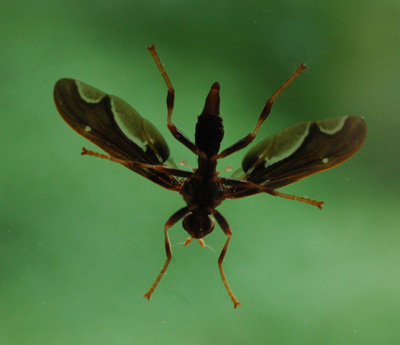Amaryllis – Outdoor Care
Q: For the second year in a row, our amaryllis bulbs did not come up until late spring and did not bloom. What are we doing wrong? We plant in very early spring. We take them up each year and keep in our basement. Please help us on how to care for them.
A: In the northen third of Georgia, amaryllis is marginally winter hardy. It can survive the winter cold if left outdoors in most years but the bulb will be frozen if temperatures get really low. If you are a gambler, you could leave yours in place this winter rather than taking them up for storage. Assuming they don’t die, the bulbs will send up foliage each April and will absorb during the summer the energy they need to bloom the next May.
Amaryllis needs a rich, soft soil in which to grow outdoors. They like regular fertilizing (every six weeks) during the summer. I’ve had most success growing them in a spot that gets sunshine from morning to early afternoon, with shade thereafter. If there is any trick to helping them bloom, it is to plant them so the neck of the bulb is exposed.
Do not plant them several inches deep like you would most bulbs. Since you’re not getting blooms otherwise, leaving yours in the ground might be the best course to try.
Master Gardener Charlie C. offers his tips:
“Amaryllis requires semi-shade, almost any soil and adequate moisture but with good drainage. A six inch amended raised bed is ideal. Optimally, planting in late summer or early October is recommended. However any time after frost in the Spring works well. Plant about a foot apart.
Leave half of the bulb exposed! They multiply rapidly and should be divided in 3-5 years. Dig and divide after the foliage has died back. Use the divisions to expand your beds or share with friends. You can also pot up a few in September for forcing for indoor winter bloom.
“Fertilize with a low nitrogen fertilizer 5-10-10 or 6-12-12, 1 1/2 lbs. per 100 square feet of bed. Too much nitrogen and too much shade will result in poor flowering. Make the first application when new growth begins, another when the stalks are 6-8 inches tall and another immediately after flowering. When finished flowering remove the flower stalks but NOT the leaves. You need them for photosynthesis to produce next year blooms.
“Mulch heavily in winter and carefully rake away in late March when new growth begins.”














